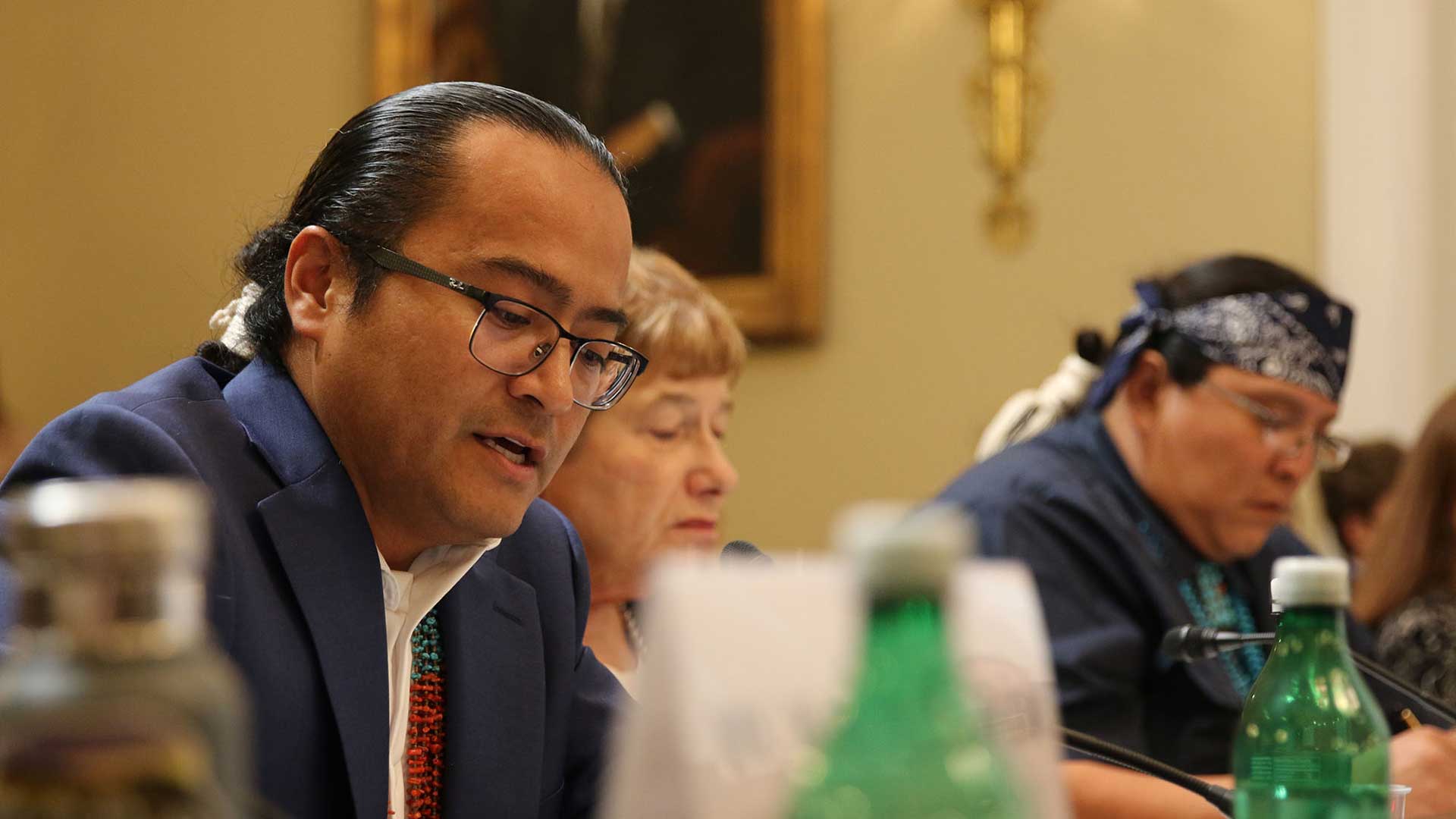 Navajo President Buu Nygren urged the House Natural Resources Committee to reverse a ban on mining and drilling for 10 miles around Chaco Canyon, saying it deprives tribe members from collecting payment on their mineral allotments and violates the tribe’s sovereignty. July 2023
Navajo President Buu Nygren urged the House Natural Resources Committee to reverse a ban on mining and drilling for 10 miles around Chaco Canyon, saying it deprives tribe members from collecting payment on their mineral allotments and violates the tribe’s sovereignty. July 2023
A new 20-year moratorium on drilling and mining within 10 miles of the Chaco Canyon tramples on tribal sovereignty and denies Navajo badly needed royalty payments, Navajo Nation President Buu Nygren told lawmakers Thursday.
“The Navajo Nation government is in the best position to know what is best for the Navajo people,” Nygren said. “We have proven over hundreds of years that our nation and the Navajo people are good stewards of land and cultural resources, including Chaco Canyon.”
But Mario Atencio, vice president of the Navajo’s Torreon/Star Lake Chapter, said the 10-mile buffer around the Chaco Culture National Historical Park is needed to ensure that oil and gas infrastructure can no longer “pollute” his people and their lands.
The Bureau of Land Management’s “mineral withdrawal is a step towards ensuring the integrity of numerous sacred sites and places and towards protecting the health and well-being of communities living on the frontlines of extraction,” Atencio said in testimony to a House Natural Resources subcommittee.
Their comments came during a hearing on the Energy Opportunities for All Act, a bill sponsored by Rep. Eli Crane, R-Oro Valley, that would rescind the BLM’s order.
That order, which took effect June 7, stops companies from developing the land for extractive uses like mining and oil drilling on 336,404 acres around the park for a period of 20 years. Existing leases will not be affected.
The Chaco Canyon area is the site of a Puebloan civilization dating back more than 1,000 years in what is now northern New Mexico. It has been protected since 1907 when President Theodore Roosevelt first designated it a national monument, and has been expanded multiple times over the years.
The bureau said its recent order is needed to “protect these public lands and the greater connected landscape,” which have significant value to tribes like the Navajo and Pueblo.
BLM Principal Deputy Director Nada Wolff Culver testified Thursday that the order “responds to decades of efforts from tribal nations, elected officials, and the public to better protect sacred and historic sites as well as the health and welfare of local tribal communities.”
As evidence of local support for the order, she cited examples of tribal communities asking for help in protecting their sacred landscape and added that no new oil and gas leases have been signed in the last 10 years in the buffer zone.
“The BLM’s evaluation found that the leasability of the vast majority – over 90% – of unleased allotments would be unaffected” by the order, she said.
But Rep. Paul Gosar, R-Bullhead City, challenged Culver’s claims that BLM consulted with tribes over the move, calling the federal government’s efforts little more than a “check-the-box exercise” that was disrespectful to tribes.
Nygren agreed, saying “there was no consultation, there were no solutions provided. It’d be a different story here today if there was a solution provided with the withdrawal.”
“Respect for tribal sovereignty must be consistent, even when it is not convenient,” he said.
But Nygren said it is more than a slap at tribal sovereignty. The moratorium also denies potential mineral royalty payments to Navajos who own mineral allotments as members of the tribe.
He said Navajo allottees, who hold resource rights that can be leased to companies in return for royalties, earn on average $20,000 a year through this mechanism. That is a significant amount of money in a region where the median income is below $27,000, Nygren said.
But Atencio, pointing to the toxic history of oil and gas in the region, encouraged lawmakers to “reject the false choice between extraction and economic prosperity.” He urged them instead to develop ways for Navajos to transition away from fossil fuels, which he said, “put our health, sacred places, and planet at risk.”

By submitting your comments, you hereby give AZPM the right to post your comments and potentially use them in any other form of media operated by this institution.